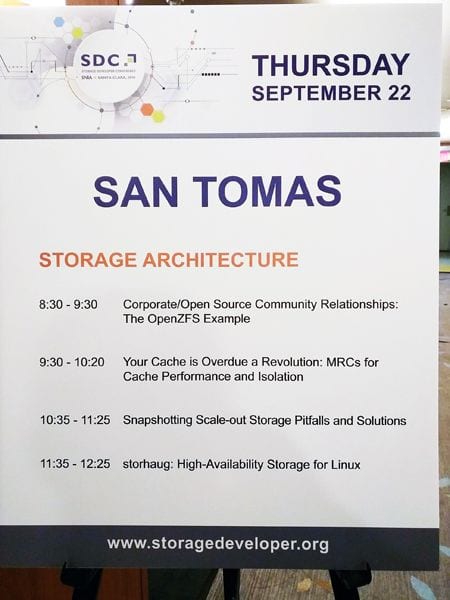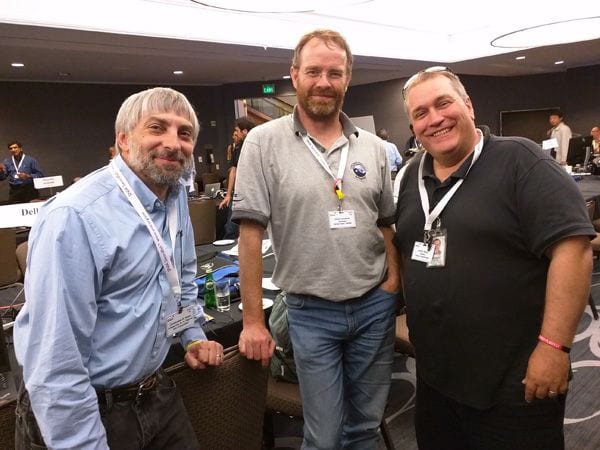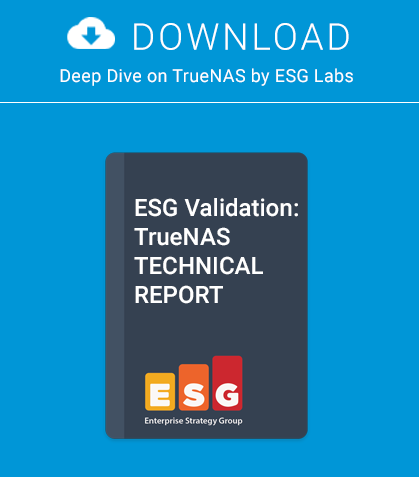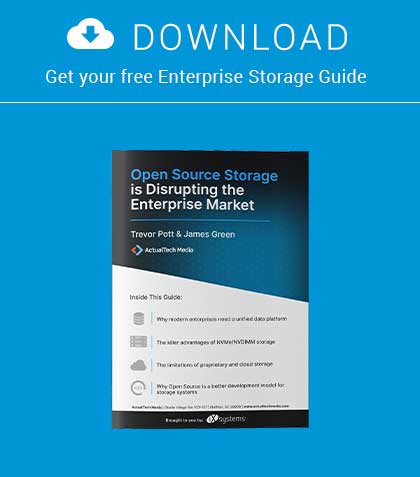NOTE: This is historical content that may contain outdated information.
For those not familiar with the Storage Networking Industry Association, SNIA is a standards body that spans legacy storage technologies like tape up through the latest flash and cloud technologies. At this year’s Storage Developer Conference, the Swordfish storage management API took center stage, which is designed to be a seamless extension of the DTMF Redfish proposed replacement for IPMI. Swordfish will provide a Redfish-compatible RESTful interface with both JSON and OData support, allowing you to seamlessly manage your storage infrastructure in a vendor-agnostic manner. Along a similar theme, the Disaster Recovery birds of a feather session addressed interoperability questions in the DR space with attention to ZFS ‘send’ and NDMP, which may result in a SNIA DR working group. This kind of interaction is exactly what makes SNIA unique: High-level dialogue between competing vendors who agree to leave their guns at the door.

The annual SMB3 Plugfest took place throughout the SDC with vendors and Open Source projects like Samba, working together to validate the compatibility of their SMB implementations. This is exactly the kind of work that is reaffirming Open Source as a competitive platform, and it was a pleasure to meet participants like Jeremy Allison of the Samba team. Samba had a strong presence on the talks agenda and other Open Source topics ranged from distributed storage solutions like Ceph and Gluster to various ways of leveraging NVMe in open environments. My talk on Corporate/Open Source Community Relationships focused on my bhyve and OpenZFS experiences and fortunately the audience had technical questions that allowed me to geek out without straying too far from the topic. Interest in OpenZFS was very strong and fortunately the SNIA SDC was followed by the OpenZFS Developer Summit the very next week.
 Members of the Samba Team including Christopher Hertel, Volker Lendecke, Jeremy Allison
Members of the Samba Team including Christopher Hertel, Volker Lendecke, Jeremy AllisonFrom a strictly raw-storage perspective, several talks focused on hard drive and SSD reliability and a researcher from CERN summed up the situation quite accurately with an old joke: “What’s the difference between a Physician, a Surgeon and a Pathologist? The Physician knows what’s wrong but doesn’t know what to do, the Surgeon doesn’t know what’s wrong but knows what to do and the Pathologist knows both what’s wrong and what to do but it is too late.” The talks “What Can One Billion Hours of Spinning Hard Drives Tell Us?”, “Characterizing the Evolution of Disk Attributes via Absorbing Markov Chains” and “Analysis of SDD Health and Prediction of SSD Life” all confirmed that we are somewhere between the Physician and Surgeon stages of drive medicine and I fear we will be long past spinning hard disks before we know exactly how to reliably predict their failure. I found the talk “Software-Defined Flash: Tradeoffs of FTL, Open-Channel, and Cooperative Flash Management” particularly interesting because new options like Open-channel SSDs show the potential for moving flash management from the storage hardware to the controlling operating system and even application. Is your database performance critical at specific times? Let the database control when a storage device can perform garbage collection and other housekeeping. Facebook’s RocksDB on Open-channel SSDs is providing a glimpse of this future and we just may be going full-circle to unabstracted application/hardware interfacing given the high latency introduced by file systems and the operating systems that manage them.
Finally, ZFS Co-Developer, Jeff Bonwick, took the wraps off of the DSSD architecture he has been working on. This is based on PCIe high-speed interconnects and a mildly mind-blowing “Sudoku RaidZ” architecture which is the equivalent of a horizontal ZFS RaidZ configuration. It’s matched with a corresponding vertical RaidZ configuration, allowing for parity to be rebuilt from both axes. This may not be practical with traditional storage media, but it is brilliant in its elegance. The slides for his keynote and all other presentations are available for
download from the SNIA site. I encourage you to explore the work that SNIA does in the storage industry and consider attending an upcoming SNIA event.
Michael Dexter
Senior Analyst





